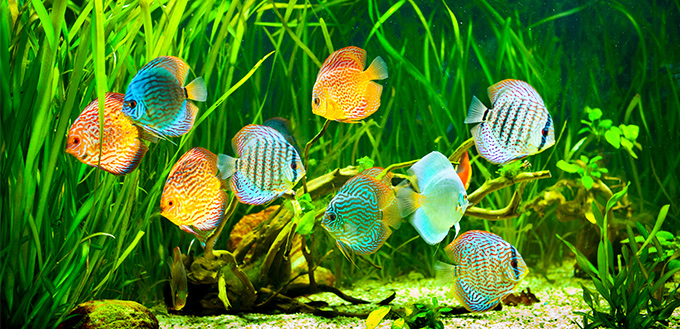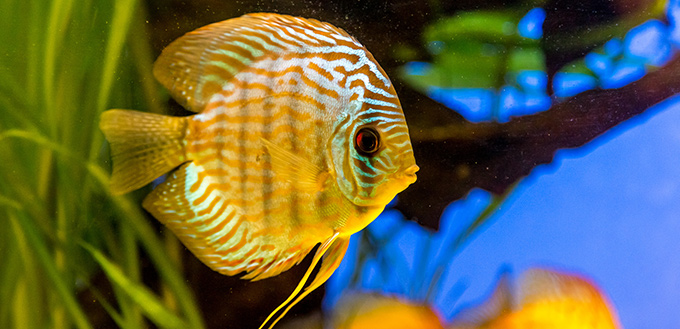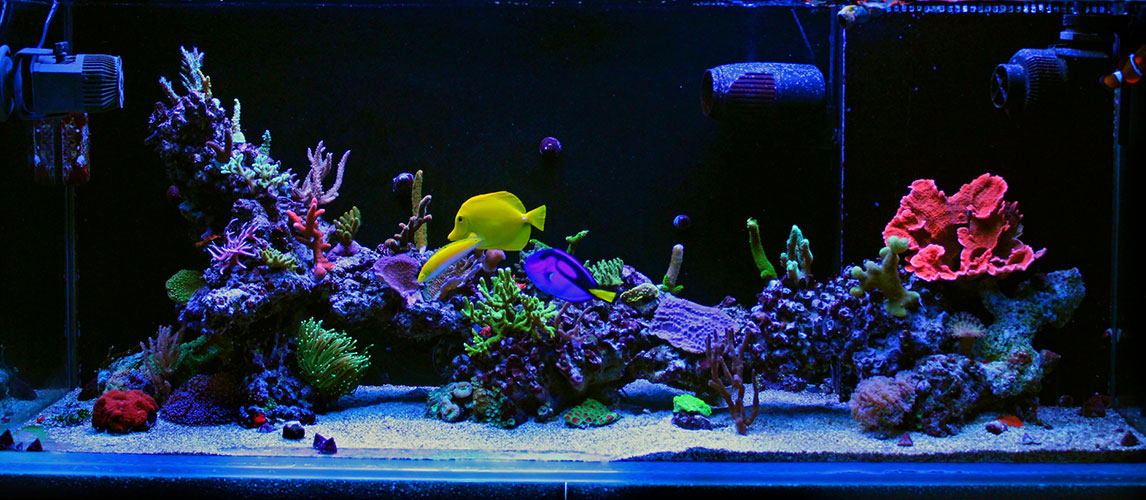One of the important aspects of maintaining an aquarium is to keep the nitrate levels low.
In a natural aquatic environment, the nitrate levels are low because the rate of dilution is high in large volumes of water. Secondly, the hydrologic cycle also ensures that the nitrate levels are low.
To give your aquatic friends a natural environment, you have to keep the nitrate levels low in your aquarium as well. Also, the presence of high levels of nitrate leads to an explosive growth in alga, thereby giving your water a green and unclean look.
Nitrates are caused by fish waste and from leftover food that rots. The bacteria present in your bio-filters convert the ammonia present in fish waste and food to nitrite and then to nitrate. Though ammonia and nitrite are extremely toxic to fish, nitrate is relatively less toxic, but when it continues to be present for long periods of time, nitrate also eventually affects fishes.
To avoid these problems, you have to lower nitrate levels often.

Related Post: Best Aquarium
Measure Nitrate Levels
One of the first steps is to measure the nitrate levels in water to see if it warrants any action from you. There are many test kits available today, and most of these will accurately tell you the nitrate levels in water. Simply follow the instructions and you should get accurate results.
Ideally, your fishes thrive well when there is no nitrate. But that is not practical, so you can keep the nitrate levels from 5ppm to 10ppm at the most. Anything about 20ppm are dangerous for your fish.
Fresh water tanks tend to have more nitrate than salt-water tanks, so that is something to consider while setting up your tank.
Water Change Alone Is Not Enough
Many aquarium owners believe that changing the water alone is enough to remove the nitrates in water. Unfortunately, this is not enough because both tap and well water contain high amounts of nitrate when compared to say sea or river water.
You should never change water as the composition can affect fishes. In other words, never empty your tanks completely and fill it with tap water, as the fishes are used to the old “dirty” water and would take some time to adapt. This is why you should not change more than 20% of water at any time.
Let’s understand why with simple math. For example, if we say that 20ppm of nitrate was present before a 20% change of water, 80ppm will remain in the water that is left behind. On an average, there is about 10ppm of nitrate in tap water. So, when you change just 20% of your water, you’re making no difference whatsoever in terms of nitrate content.
So, what else can you do?
Ways to Lower Nitrate In Your Aquarium
Below are some suggestions that will help to lower nitrate levels in your aquarium.

- Add live plants
When you add live plants to your aquarium, they can absorb the extra nitrate in the water, as they need nitrates for fuel and growth. In general, fast growing plants like water sprites lower nitrogen levels faster than slow growing plants. So, the choice of plant also has a bearing on how quickly your nitrate levels go down.
You may also like to check out our article on: the 10 Best Floating Aquarium Plants
- Alter your tanks and fishes
Fish waste is high in nitrate. So, one way to reduce nitrate levels in water is to move your fish to a bigger tank, as the nitrates dissolve better in larger volumes of water.
Another way is to reduce the number of fishes you have, if that’s an option, as this will bring down the levels of fish waste, and through it the nitrate levels in water.
One more way is to reduce the amount of food you serve to fishes, as fish foods also tend to have high levels of nitrates in them. Again, this could have an adverse effect as fishes need a certain amount of food to survive. So, if you reduce the food levels to avoid nitrate accumulation, it could affect the growth of your fish.
- Use nitrate removers
There are many nitrate removers that reduce nitrate levels in water. As a bonus, these removers can also eliminate pollution and the other forms of organic waste present in your aquarium water.
There are also many biofilters that have the ability to absorb nitrates, thereby reducing the nitrate levels in water.
Also, you need to have a strict maintenance routine to ensure that nitrate doesn’t pile up in your tank. Water change should happen once every two to three days and even consider vacuuming the bottom of your fish tank to avoid the accumulation of unwanted particles. If you have gravels, go below each gravel layer to clean your tank thoroughly.
- Clean filters
Cleaning your filters often is essential to keep your fishes healthy. Ideally, you should clean it at least once a week because all that it does is filters bio-waste, doesn’t eliminate them. These waste particles get accumulated in the filters and continue to get dissolved in water. To avoid this, clean your filers often and this can greatly reduce nitrate levels.
- Remove decaying plants
If you have live plants in your tank, you also have much cleaning to do. The dead leaves that fall from the plants will decay and will create additional waste in your tank. So, you’ll have to remove dead leaves as they fall to prevent nitrate levels from rising in the water tank.
In short, you need the lowest nitrate levels possible for healthy fishes. In their natural environment, fishes are used to living in waters that have little to nitrate, so you need to emulate similar conditions in your tank too.
There are many ways to lower the nitrate levels, and they are explained above. Above everything, keep your tank clean and avoid having too many fishes in a small tank, as all these are detrimental to the health of your fishes. You can even consider using biofilters and nitrate removers.






